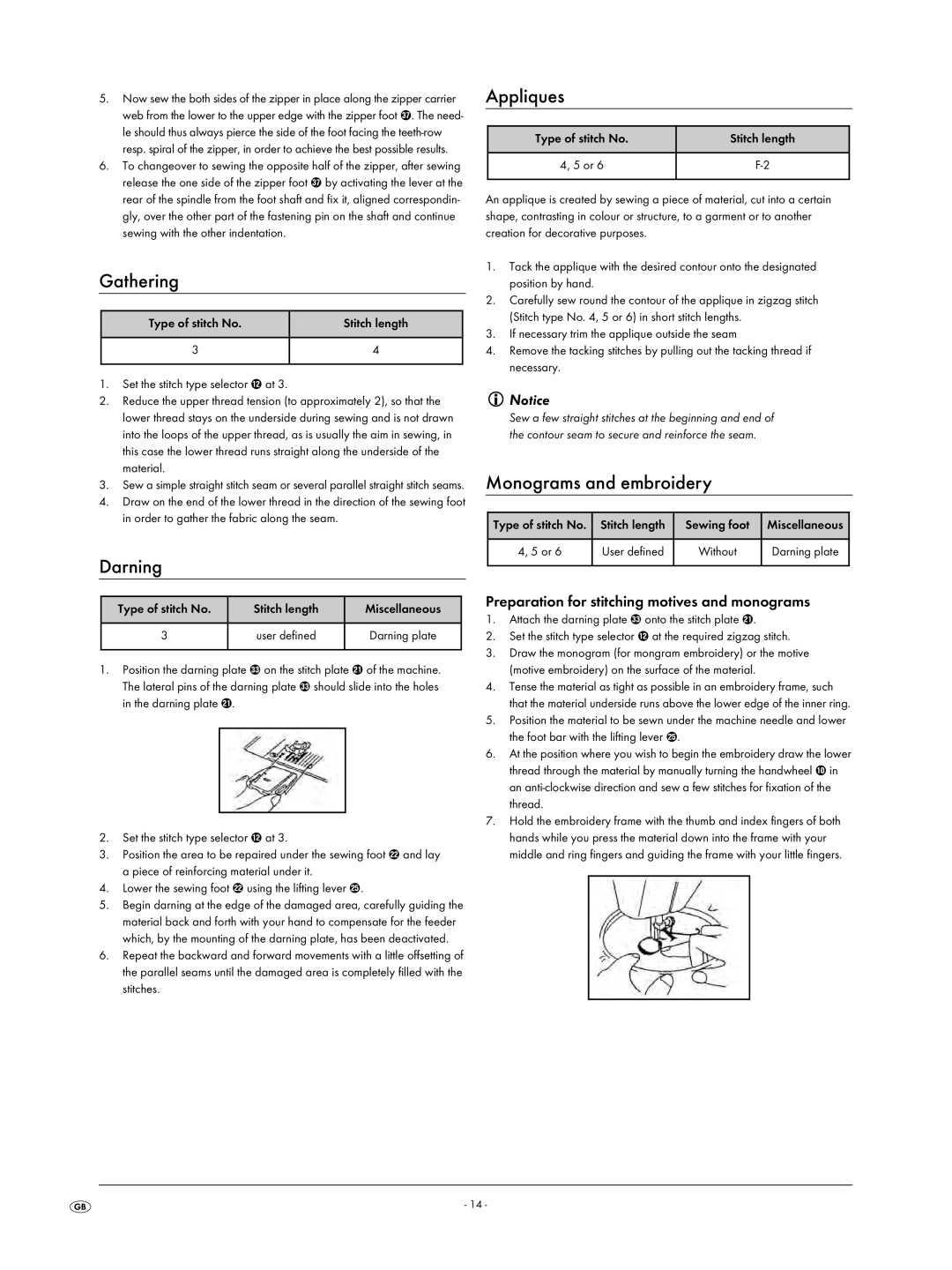
5.Now sew the both sides of the zipper in place along the zipper carrier web from the lower to the upper edge with the zipper foot M. The need- le should thus always pierce the side of the foot facing the
6.To changeover to sewing the opposite half of the zipper, after sewing release the one side of the zipper foot M by activating the lever at the rear of the spindle from the foot shaft and fix it, aligned correspondin- gly, over the other part of the fastening pin on the shaft and continue sewing with the other indentation.
Gathering
Type of stitch No. | Stitch length |
|
|
3 | 4 |
|
|
1.Set the stitch type selector w at 3.
2.Reduce the upper thread tension (to approximately 2), so that the lower thread stays on the underside during sewing and is not drawn into the loops of the upper thread, as is usually the aim in sewing, in this case the lower thread runs straight along the underside of the material.
3.Sew a simple straight stitch seam or several parallel straight stitch seams.
4.Draw on the end of the lower thread in the direction of the sewing foot in order to gather the fabric along the seam.
Darning
Type of stitch No. | Stitch length | Miscellaneous |
|
|
|
3 | user defined | Darning plate |
|
|
|
1.Position the darning plate v on the stitch plate a of the machine. The lateral pins of the darning plate v should slide into the holes in the darning plate a.
2.Set the stitch type selector w at 3.
3.Position the area to be repaired under the sewing foot s and lay a piece of reinforcing material under it.
4.Lower the sewing foot s using the lifting lever g.
5.Begin darning at the edge of the damaged area, carefully guiding the material back and forth with your hand to compensate for the feeder which, by the mounting of the darning plate, has been deactivated.
6.Repeat the backward and forward movements with a little offsetting of the parallel seams until the damaged area is completely filled with the stitches.
Appliques
Type of stitch No. | Stitch length |
|
|
4, 5 or 6 | |
|
|
An applique is created by sewing a piece of material, cut into a certain shape, contrasting in colour or structure, to a garment or to another creation for decorative purposes.
1.Tack the applique with the desired contour onto the designated position by hand.
2.Carefully sew round the contour of the applique in zigzag stitch (Stitch type No. 4, 5 or 6) in short stitch lengths.
3.If necessary trim the applique outside the seam
4.Remove the tacking stitches by pulling out the tacking thread if necessary.
Notice
Sew a few straight stitches at the beginning and end of the contour seam to secure and reinforce the seam.
Monograms and embroidery
Type of stitch No. | Stitch length | Sewing foot | Miscellaneous |
|
|
|
|
4, 5 or 6 | User defined | Without | Darning plate |
|
|
|
|
Preparation for stitching motives and monograms
1.Attach the darning plate v onto the stitch plate a.
2.Set the stitch type selector w at the required zigzag stitch.
3.Draw the monogram (for mongram embroidery) or the motive (motive embroidery) on the surface of the material.
4.Tense the material as tight as possible in an embroidery frame, such that the material underside runs above the lower edge of the inner ring.
5.Position the material to be sewn under the machine needle and lower the foot bar with the lifting lever g.
6.At the position where you wish to begin the embroidery draw the lower thread through the material by manually turning the handwheel 0 in an
7.Hold the embroidery frame with the thumb and index fingers of both hands while you press the material down into the frame with your middle and ring fingers and guiding the frame with your little fingers.
- 14 -
